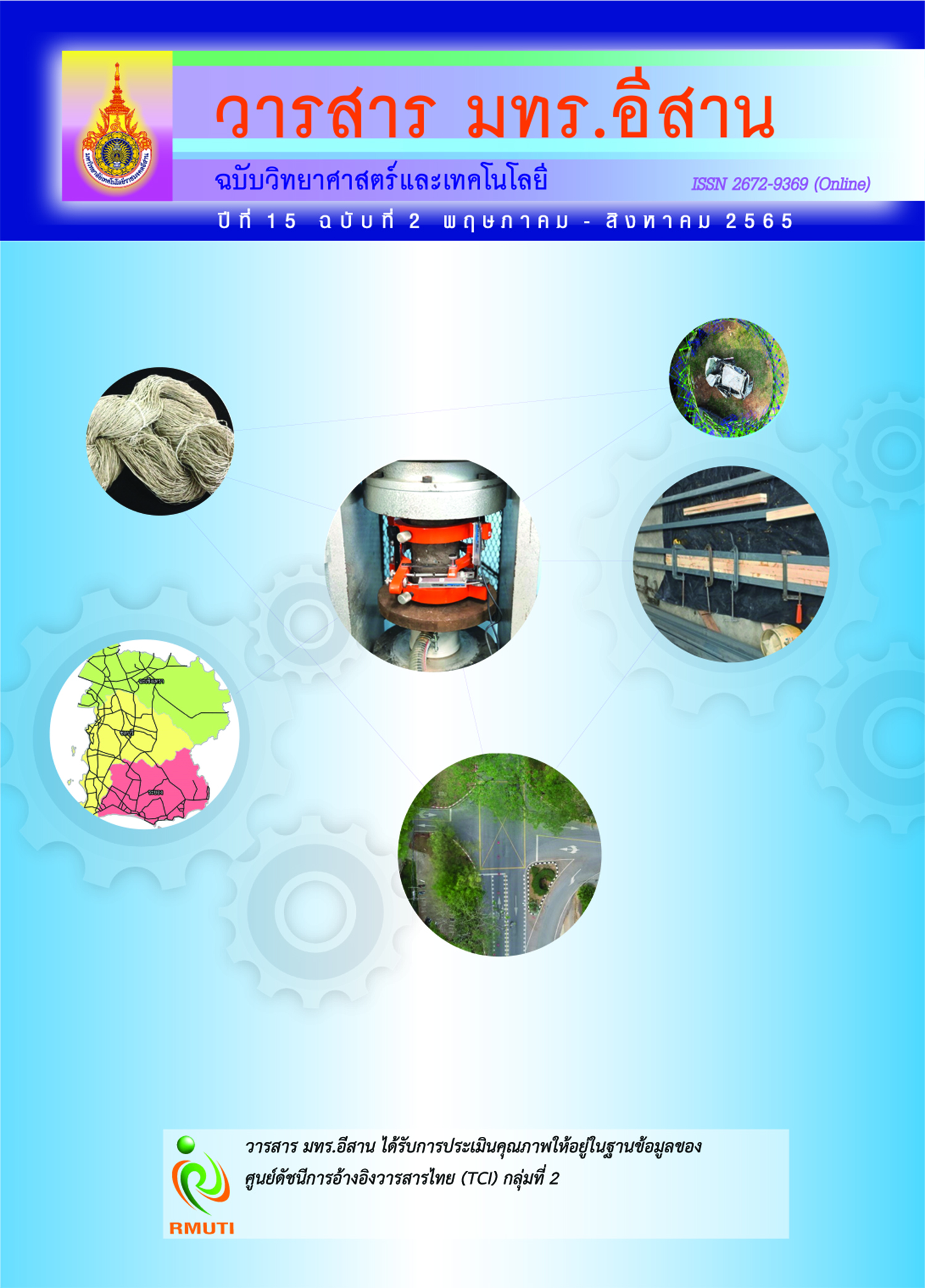Forecasting Number of Truck Drivers on Road Network in Eastern Economic Corridor of Thailand by Using 4-Steps Sequential Decision Models
Main Article Content
Abstract
This article proposes an approach to forecasting the number of truck drivers on the road network in the Eastern Economic Corridor (EEC) of Thailand. The forecasting model of freight transportation was developed according to the academic principles of traffic and transportation engineering by 4-step sequential decision model. The method was divided into four steps: 1) collecting data for model development, 2) developing the model, 3) calibrating the model, and 4) applying the model. The results revealed that the freight forecasting outcomes obtained from the 4-steps sequential decision models differed between the cases with and without the EEC development. In the case of the EEC development, the total cargo volume in all modes of transportation (road, railway, water, air) was forecasted approximately at 3,217.43 thousand tons/day in 2051. Most of them were road transport, about 97.98 % with other modes accounting for 2.02 % only. The 4-wheeler mini truck had the largest share, about 63.58 %, followed by 6-wheel medium trucks, trailers, 10-wheel trucks, and semi-trailers, which accounted for 12.09, 8.70, 8.02, and 7.61 %, respectively. Furthermore, the number of truck drivers was forecasted to increase from 52,791 persons (2021) to 74,153 persons in 2051, which was high compared to the case without EEC development of about 2,227 persons.
Article Details

This work is licensed under a Creative Commons Attribution-NonCommercial-NoDerivatives 4.0 International License.
References
The Eastern Economic Corridor Office. (2020). Progress Report on the Development of the Eastern Special Development Zone. Access (10 January 2021). Available (https://www.eeco.or.th/th/filedownload/1681/f8c7120357518db49151f435d3eb3061.pdf)
Mukundan, S. (2017). Analytics in HR A Snapshot View. International Journal of Engineering Technology, Management and Applied Sciences. Vol. 5, Issue 7, pp. 597-601
Taha, A. H. (2017). Operations Research An Introduction, Tenth Edition. Malaysia: Pearson Education
Bowersox, D. J., Closs, D. J., and Cooper, M. B. (2009). Supply Chain Logistics Management. New York: McGraw-Hill/Irwin
Hutchinson, B. G. (1974). Principles of Urban Transport Systems Planning. Washington, D.C.: Scripta
Yagi, S. and Mohammadian, A. K. (2010). An Activity-Based Microsimulation Model of Travel Demand in the Jakarta Metropolitan Area. Journal of Choice Modelling. Vol. 3, No. 1, pp. 32-57
Office of Transport and Traffic Policy and planning. (2018). Travel Demand Survey. Bangkok: Office of Transport and Traffic Policy and Planning
Kaewwichian, P. and Tanwanichkul, L. (2018). Method of Trip-Chaining and Tour Formation for Travel Demand Model Development. RMUTI JOURNAL Science and Technology. Vol. 11, No. 1, pp. 57-68
Meechaiyo, B. and Sangsrichan, C. (2019). Developing Transportation System Strategic Plan for Sustainable Community Development: Naresuan University Case Study. Naresuan University Engineering Journal. Vol. 14, Issue 2, pp. 1-13
Ortúzar, J. D. and Willumsen, L. G. (1990). Modeling Transport. New York: John Wiley & Sons
Brustlin, V. H. (2007). Transportation Demand Management Plan. Verginia: University of Verginia
Steinhoff, M. and Harpring, J. (2008). Transportation and Sustainability on the Indiana University. Bloomington: Bloomington Campus, Indiana University
Comsis Corporation. (1983). UTPS Highway Network Development Guide. Washington, D.C.: US Department of Transportation, Federal Highway Administration
The Eastern Economic Corridor Office. (2018). Infrastructure Development Action Plan Support the development of the Eastern Special Development Zone. Access (20 January 2021). Available (https://www.eeco.or.th/web-upload/filecenter/untitled%20folder/EEC009.pdf)
Department of Highways. (2016). Average Annual Daily Traffic on Highways. Bangkok: Department of Highways
Office of Transport and Traffic Policy and Planning. (2017). A Study of Logistics Network System to Support the Development of the Special Economic Zone (Super Cluster) and the Country's Trade Gateway. Bangkok: Office of Transport and Traffic Policy and planning


